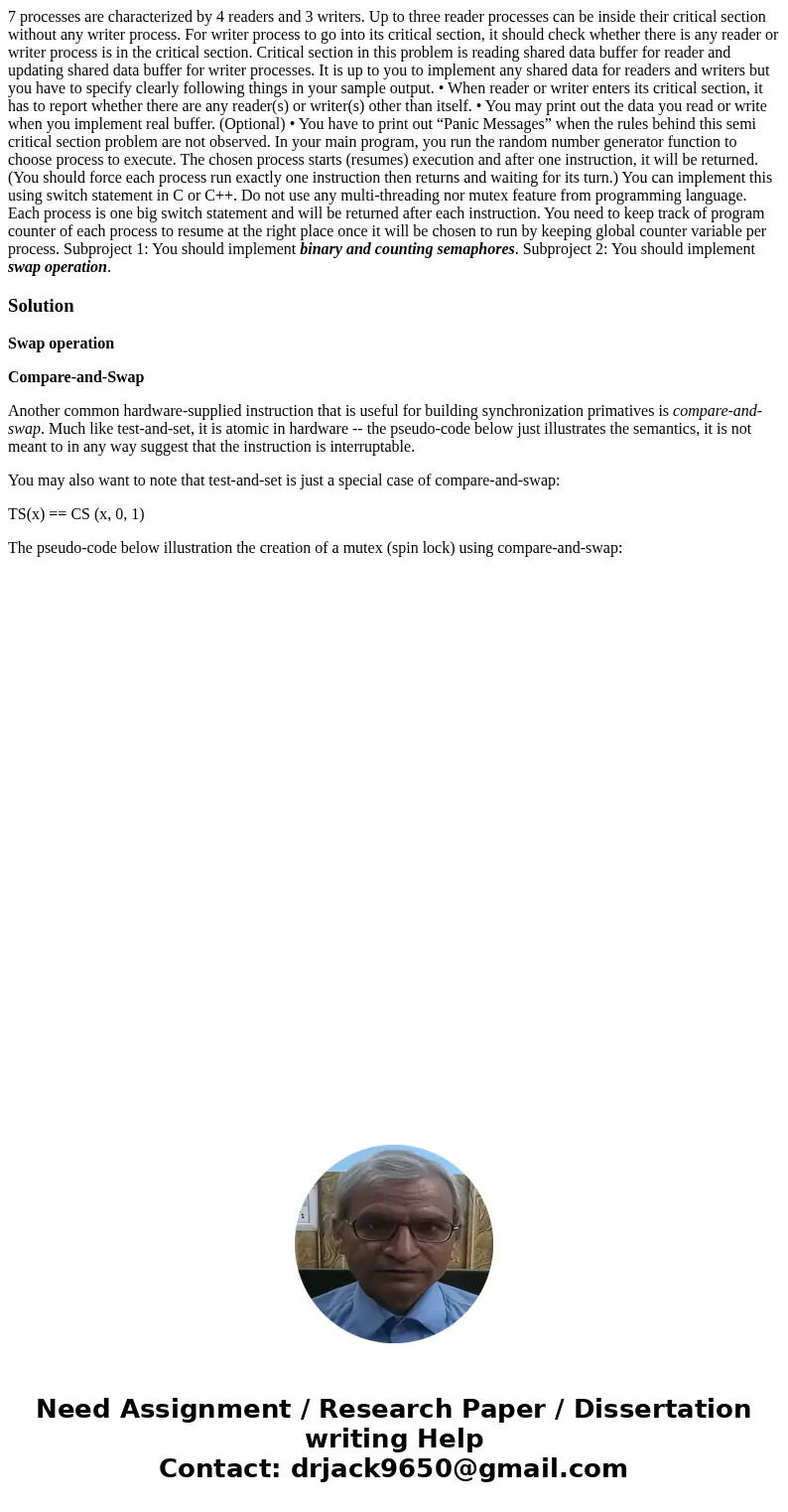7 processes are characterized by 4 readers and 3 writers Up
7 processes are characterized by 4 readers and 3 writers. Up to three reader processes can be inside their critical section without any writer process. For writer process to go into its critical section, it should check whether there is any reader or writer process is in the critical section. Critical section in this problem is reading shared data buffer for reader and updating shared data buffer for writer processes. It is up to you to implement any shared data for readers and writers but you have to specify clearly following things in your sample output. • When reader or writer enters its critical section, it has to report whether there are any reader(s) or writer(s) other than itself. • You may print out the data you read or write when you implement real buffer. (Optional) • You have to print out “Panic Messages” when the rules behind this semi critical section problem are not observed. In your main program, you run the random number generator function to choose process to execute. The chosen process starts (resumes) execution and after one instruction, it will be returned. (You should force each process run exactly one instruction then returns and waiting for its turn.) You can implement this using switch statement in C or C++. Do not use any multi-threading nor mutex feature from programming language. Each process is one big switch statement and will be returned after each instruction. You need to keep track of program counter of each process to resume at the right place once it will be chosen to run by keeping global counter variable per process. Subproject 1: You should implement binary and counting semaphores. Subproject 2: You should implement swap operation.
Solution
Swap operation
Compare-and-Swap
Another common hardware-supplied instruction that is useful for building synchronization primatives is compare-and-swap. Much like test-and-set, it is atomic in hardware -- the pseudo-code below just illustrates the semantics, it is not meant to in any way suggest that the instruction is interruptable.
You may also want to note that test-and-set is just a special case of compare-and-swap:
TS(x) == CS (x, 0, 1)
The pseudo-code below illustration the creation of a mutex (spin lock) using compare-and-swap:

 Homework Sourse
Homework Sourse